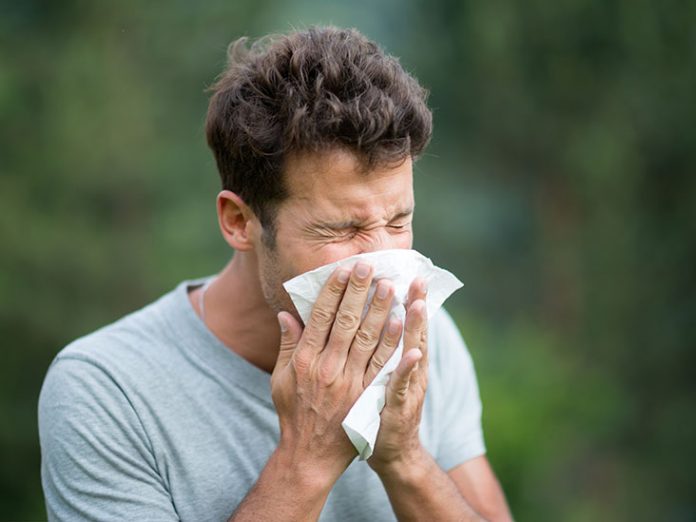
Coronaviruses are a type of virus that mainly affect the breathing systems of birds and mammals, including humans. Doctors link them to illnesses like the common cold, bronchitis, pneumonia, severe acute respiratory syndrome (SARS), and COVID-19. They can also impact the stomach.
Usually, coronaviruses are responsible for common colds rather than more serious diseases, but they have caused some major outbreaks in the past.
Scientific research for the past 70 years have shown that coronaviruses can infect animals like rats, mice, cats, pigs, turkeys, dogs, horses, and cattle. Sometimes, these animals can pass the virus to humans.
Recently, a new coronavirus outbreak was found in China, which has now spread to many other countries. This virus is called coronavirus disease 2019, or COVID-19.
In this article, we will talk about the different types of coronaviruses that can infect humans, their symptoms, and how they spread from person to person. We will also focus on three particularly dangerous diseases caused by coronaviruses: COVID-19, SARS, and MERS.
Scientists first discovered a coronavirus back in 1937 when they found one that caused a disease in birds, which hurt poultry farms badly.
The first evidence of human coronaviruses (HCoV) was found in the 1960s, when researchers identified them in people with common colds. Two types of human coronaviruses, OC43 and 229E, are responsible for many of the common colds people get.
The name “coronavirus” comes from the crown-like shape of the virus when looked at under a microscope. “Corona” means “crown” in Latin.
In humans, coronavirus infections usually happen in winter and early spring. People often catch a cold caused by a coronavirus, and they might get sick from the same strain again about four months later. This is because the antibodies that help fight the virus don’t last long, and antibodies for one strain may not work against another.
In 2019, the Centers for Disease Control and Prevention (CDC) began tracking a new coronavirus, called SARS-CoV-2, which causes COVID-19. This virus was first identified in Wuhan, China.
Since then, it has spread to many countries worldwide, leading the World Health Organization (WHO) to declare it a pandemic.
As of March 23, more than 340,000 people around the globe have caught the virus, and over 14,000 people have died from it.
In the U.S., more than 35,000 people have been infected, resulting in over 450 deaths.
The first cases of COVID-19 were linked to an animal and seafood market, suggesting that the virus came from animals. However, many people diagnosed later had no connections to the market, showing that the virus can spread from person to person.
Right now, there isn’t a lot of information about this virus. In the past, respiratory illnesses caused by coronaviruses like SARS and MERS have spread through close contact.
On February 17, 2020, the WHO shared updates about COVID-19, saying that older adults (over 60) and people with other health issues are more likely to get seriously ill from the virus.
According to the CDC, children are not at a higher risk for COVID-19 compared to adults.
There are currently no studies on whether pregnant women are more susceptible to COVID-19, but the CDC notes that they may be more vulnerable to respiratory infections in general.
For infants born to mothers with suspected or confirmed COVID-19, the CDC suggests keeping them in isolation as a precaution.
Symptoms of COVID-19 can vary widely. Some people may have very few or no symptoms, while others can get seriously sick or even die. Common symptoms include:
- Fever
- Shortness of breath
- Cough
- Possible loss of taste or smell
It can take 2 to 14 days after infection for a person to notice symptoms.
There is no vaccine for COVID-19 at the moment, but scientists have been able to replicate the virus, which could help with early detection and treatment for people who are infected but not yet showing symptoms.
The National Institutes of Health (NIH) say that certain groups of people are at a higher risk for complications due to COVID-19, including:
- Young children
- People aged 65 and older
- Pregnant women
The CDC warns that while complications in young children have been reported, they are rare, and COVID-19 usually causes mild symptoms in kids.
Cold or flu-like symptoms usually appear 2 to 4 days after catching a coronavirus and are often mild. However, symptoms can differ from person to person, and some forms of the virus can be dangerous.
Symptoms may include:
- Sneezing
- Runny nose
- Fatigue
- Cough
- Fever
- Sore throat
- Worsened asthma
It is difficult for scientists to grow human coronaviruses in the lab compared to other viruses that cause the common cold, making it hard to understand their impact on health and the economy.
There is no cure for coronaviruses that cause cold-like symptoms, but treatments include rest and over-the-counter (OTC) medications. People can take steps to feel better, such as:
Resting and not overdoing it
Drinking plenty of water
Avoiding smoking and smoky places
Taking acetaminophen for pain and fever
Using a clean humidifier or cool mist vaporizer
A doctor can diagnose a coronavirus infection by testing samples of respiratory fluids, like mucus from the nose, or blood.
Coronaviruses belong to a subfamily called Coronavirinae in the family Coronaviridae.
There are seven types of coronaviruses that can infect humans, and they vary in how serious the diseases they cause can be and how easily they spread.
Common types include:
- 229E (alpha coronavirus)
- NL63 (alpha coronavirus)
- OC43 (beta coronavirus)
- HKU1 (beta coronavirus)
There are also rarer strains that can cause more severe problems, like MERS-CoV, which causes Middle East respiratory syndrome (MERS), and SARS-CoV, which causes severe acute respiratory syndrome (SARS).
In 2019, a new strain called SARS-CoV-2 started spreading and causing COVID-19.
We still don’t know a lot about how human coronaviruses spread from one person to another, but researchers think they mostly transmit through respiratory fluids, like mucus.
Coronaviruses can spread in several ways:
- Coughing and sneezing without covering your mouth can send droplets into the air.
- Shaking hands or touching a person who has the virus can transfer it between people.
- Touching a surface or object that has the virus and then touching your nose, eyes, or mouth.
Some animal coronaviruses, like feline coronavirus (FCoV), might spread through contact with feces, but it’s not clear if the same applies to human coronaviruses.
Most people will likely get infected with coronaviruses at some point in their lives. These viruses can change quickly, making them very contagious.
To prevent spreading the virus, people should stay home and rest while they have symptoms and avoid close contact with others. Covering your mouth and nose with a tissue or handkerchief when you cough or sneeze can also help stop the spread. It’s important to throw away used tissues and keep things clean at home.
SARS is a contagious disease caused by the SARS-CoV coronavirus. It usually leads to a serious type of pneumonia.
In November 2002, the virus began in Guangdong Province in southern China and quickly spread to Hong Kong and then to over 24 other countries.
SARS-CoV can infect both the upper and lower parts of the respiratory system.
Symptoms of SARS appear over a week and begin with a fever. Early on, people may have flu-like symptoms such as:
- Dry cough
- Chills
- Diarrhea
- Shortness of breath
- Body aches
Pneumonia, a severe lung infection, often develops. In the most serious cases, SARS can cause failure of the lungs, heart, or liver.
According to the CDC, there were 8,098 reported cases of SARS during the outbreak, with 774 deaths, which is a mortality rate of 9.6%. Older adults were more likely to have complications, and half of those over 65 who got sick did not survive. SARS was eventually brought under control by July 2003, but it can still occur after someone has been infected with SARS-CoV.
MERS is caused by the MERS-CoV coronavirus. Scientists first identified this serious respiratory illness in 2012 after it appeared in Saudi Arabia, and it has since spread to other countries, including the U.S. The largest outbreak outside the Arabian Peninsula happened in South Korea in 2015.
Symptoms of MERS include fever, shortness of breath, and coughing. It spreads through close contact with infected people, but all known cases have been linked to travelers returning from the Arabian Peninsula.
A study in 2019 found that MERS has a fatality rate of 35.2% among those who get it.
Stay informed about the ongoing COVID-19 outbreak. The Centers for Disease Control and Prevention also offer resources on how to lower the risk of infection.








